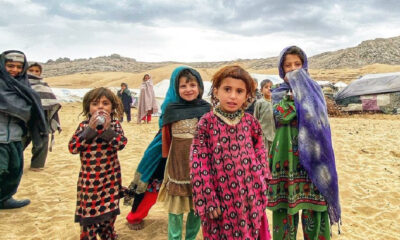Science & Technology
N.Korea fires salvo of missiles, including ICBM, hours after Biden leaves Asia
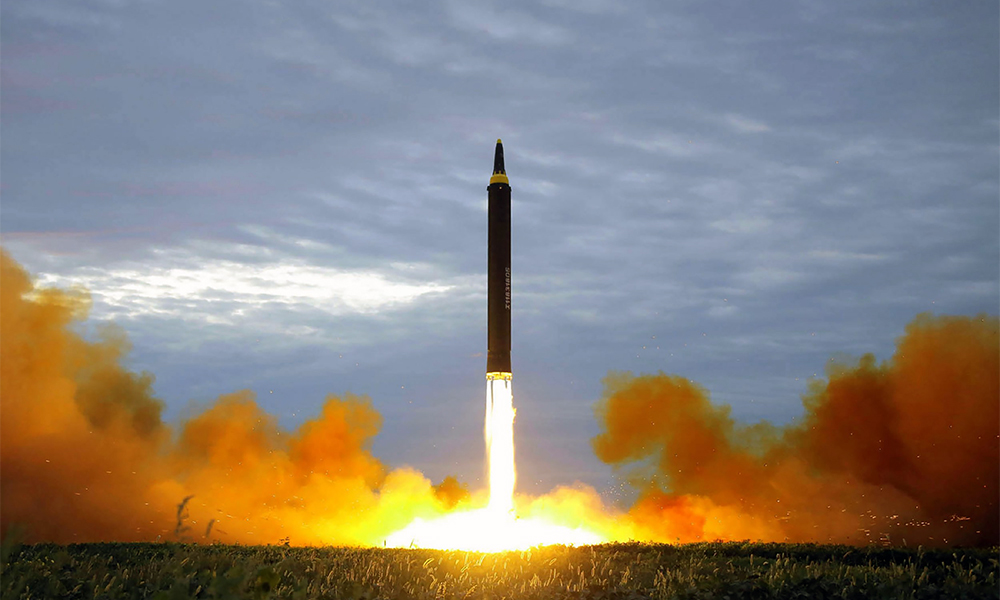
North Korea fired three missiles, including one thought to be an intercontinental ballistic missile (ICBM) on Wednesday, after U.S. President Joe Biden left Asia following a trip in which he agreed to new measures to deter the nuclear-armed state.
South Korea’s Joint Chiefs of Staff (JCS) said the three missiles were fired in less than an hour from the Sunan area of the North’s capital, Pyongyang, where its international airport has become a hub of missile tests.
The first missile launched on Wednesday appeared to be an ICBM, while a second unidentified missile appears to have failed mid-flight, the JCS said. The third missile was a short-range ballistic missile (SRBM), it said.
In response, the United States and South Korea held combined live-fire drills, including surface-to-surface missile tests involving the Army Tactical Missile System (ATACMS) of the U.S. and the South’s Hyunmoo-2 SRBM, both militaries said.
“Our military’s show of force was intended to highlight our resolve to firmly respond to any North Korean provocations, including an ICBM launch, and our overwhelming capability and readiness to conduct a surgical strike on the origin of the provocation,” the JCS said in a statement.
North Korea has conducted a flurry of missile launches this year, from hypersonic weapons to test firing its largest ICBMs for the first time in nearly five years. It also appears to be preparing for what would be its first nuclear test since 2017.
U.S. and South Korean officials had recently warned that North Korea appeared ready for another weapons test, possibly during Biden’s visit, which was his first trip to Asia as president and included a summit with South Korean President Yoon Suk-yeol in Seoul.
Yoon, who took office on May 10, convened his first meeting of the national security council, which strongly condemned the latest launch as a “grave provocation”, especially as it came before Biden returned home.
Yoon ordered the aides to strengthen the U.S. extended deterrence and combined defence posture as agreed with Biden, his office said.
“North Korea’s continued provocations will only result in even stronger, faster South Korea-U.S. deterrence, and bring deeper isolation upon itself,” Yoon’s government said in a separate statement.
A White House official said that Biden, who departed Japan on Tuesday evening, had been briefed on the launches and would continue to receive updates.
South Korean Foreign Minister Park Jin and U.S. Secretary of State Antony Blinken also agreed to step up diplomatic efforts to reinforce extended deterrence and facilitate a new U.N. sanctions resolution in a phone call, Seoul’s ministry said.
“We call on the DPRK to refrain from further provocations and engage in sustained and substantive dialogue,” a State Department spokesperson said, using the initials of North Korea’s official name.
SHOW OF FORCE
Pyongyang resumed ICBM testing in late March, ending its self-imposed 2017 moratorium on long-range missile and nuclear testing, amid stalled denuclearisation talks with Washington.
In Wednesday’s test, the suspected ICBM flew 360 km (223.7 miles) to a maximum altitude of 540 km, while the SRBM flew 760 km to a maximum altitude of 60 km, the JCS said.
Japan reported at least two launches, one of which flew about 300 km and reached a maximum altitude of 550 km, and the other to the distance of about 750 km (465 miles) and a maximum altitude of 50 km, Japan’s defence minister said.
Japanese broadcaster NHK said the missiles appeared to have fallen outside Japan’s exclusive economic zone (EEZ).
Japanese chief cabinet secretary Hirokazu Matsuno said the North could take more provocative actions, including a nuclear test.
The U.S. military’s Indo-Pacific Command said it was aware of “multiple” launches. They highlighted the “destabilising impact of the DPRK’s illicit weapons programme” but did not pose an immediate threat.
In Seoul over the weekend, Biden and Yoon agreed to hold bigger military drills and deploy more U.S. strategic assets if necessary to deter North Korea’s intensifying weapons tests.
But they also offered to send COVID-19 vaccines to North Korea as the isolated country battles its first confirmed outbreak, and called on Pyongyang to return to diplomacy.
There had been no response from Pyongyang to the diplomatic overtures or offers of aid, Biden said at the time.
The waning hours of Biden’s visit to the region also saw Russian and Chinese bombers flying joint patrols near Japanese and South Korea air defence zones on Tuesday in a pointed farewell.
Science & Technology
Apple loses top phonemaker spot to Samsung as iPhone shipments drop, IDC says

Apple’s (AAPL.O), opens new tab smartphone shipments dropped about 10% in the first quarter of 2024, hurt by intensifying competition by Android smartphone makers aiming for the top spot, data from research firm IDC showed on Sunday.
Global smartphone shipments increased 7.8% to 289.4 million units during January-March, with Samsung (005930.KS), opens new tab, at 20.8% market share, clinching the top phonemaker spot from Apple, Reuters reported.
The iPhone-maker’s steep sales decline comes after its strong performance in the December quarter when it overtook Samsung as the world’s No.1 phone maker. It’s back to the second spot, with 17.3% market share, as Chinese brands such as Huawei gain market share.
Xiaomi, one of China’s top smartphone makers, occupied the third position with a market share of 14.1% during the first quarter, read the report.
South Korea’s Samsung, which launched its latest flagship smartphone lineup – Galaxy S24 series – in the beginning of the year, shipped more than 60 million phones during the period.
Global sales of Galaxy S24 smartphones jumped 8%, compared to last year’s Galaxy S23 series during their first three weeks of availability, data provider Counterpoint previously said.
In the first quarter, Apple shipped 50.1 million iPhones, down from 55.4 million units it shipped same period last year, according to IDC.
Apple’s smartphone shipments in China shrank 2.1% in the final quarter of 2023 from a year earlier.
The drop underscores the challenges facing the U.S. firm in its third biggest market, as some Chinese companies and government agencies limit employees’ use of Apple devices, a measure that mirrors U.S. government restrictions on Chinese apps on security grounds.
The Cupertino, California-based company in June will hold its Worldwide Developers Conference (WWDC), where it will highlight updates to the software powering iPhones, iPads, and other Apple devices.
Investors are closely watching for updates on artificial intelligence development at Apple, which has so far spoken little about incorporating the AI technology into its devices. The company earlier this year lost the crown as the world’s most valuable company to Microsoft (MSFT.O), opens new tab, Reuters reported.
Science & Technology
China launch of relay satellite Queqiao-2 for lunar probe mission successful

China National Space Administration (CNSA) said on Friday its launch of a key signal relay satellite was a “complete success” and it would serve as the communication bridge for its future lunar probe missions for years to come, state media reported.
China launched the satellite Queqiao-2, which was named after a mythological bridge made of magpies, and two miniature satellites, Tiandu-1 and Tiandu-2, on March 20.
Queqiao-2 will be used as a communications bridge between the ground operations on earth and upcoming lunar probe missions on the far side of the moon until at least 2030.
The moon’s near side always faces earth. That means data transfers from the far side are impossible because there is no direct line of sight.
Queqiao-2 researcher and developer Xiong Liang described the satellite as “the main switch” of the whole fourth phase of lunar missions, according to state television CCTV.
“Only when the main switch is flipped on, all the communications can kick off,” Xiong said.
Queqiao-2 will orbit the moon and relay signals to and from the Chang’e-6 mission, which expected to be launched in May. The robotic Chang’e-6 probe will seek to retrieve samples from an ancient basin, acquiring lunar material from the moon’s hidden side for the first time.
Queqiao-2 will also be used as a relay platform for the Chang’e-7 lunar mission in 2026 and the Chang’e-8 mission in 2028.
The functions and performance of Queqiao-2 met mission requirements and it will be able to provide relay communication services for China’s lunar exploration projects and future lunar missions for China and other countries, said the CNSA, according to CCTV.
Queqiao-2 entered its targeted elliptical orbit on April 2 after a correction midway, near-moon braking and orbital manoeuvre around the moon, CNSA said.
The satellite has successfully communicated with Chang’e 4, which was the first spacecraft to perform a soft landing on the far side of the moon and is still carrying out its exploration mission. It also communicated with the Chang’e-6 probe while it is still on the ground earlier this month.
The successful launch of Queqiao-2 comes after the failed launch of another lunar spacecraft DRO-A/B satellites, which was intended to enter the moon’s distant retrograde orbit (DRO).
China has not released any information on whether or not the satellites can be retrieved.
(Reuters)
Science & Technology
Russia aborts planned test launch of new heavy-lift space rocket

Russian space officials on Tuesday aborted the test launch of a new heavy-lift rocket from its far-eastern launch pad.
The Angara-A5 rocket was scheduled to lift off from the Vostochny space launch facility at 0900 GMT Tuesday, but the launch was aborted two minutes before, AP reported.
Yuri Borisov, head of Roscosmos state space corporation, said the automatic safety system canceled the launch after registering a flaw in the oxidizer tank pressurization system.
He said the next launch attempt was set for Wednesday.
Tuesday’s launch was to be the fourth for the Angara-A5, a heavy-lift version of the new Angara family of rockets that has been developed to replace the Soviet-designed Proton rockets.
-

 Sport4 days ago
Sport4 days agoACL fever grows as fixtures finalized
-

 World5 days ago
World5 days agoUS will not take part in any Israeli retaliatory action against Iran
-
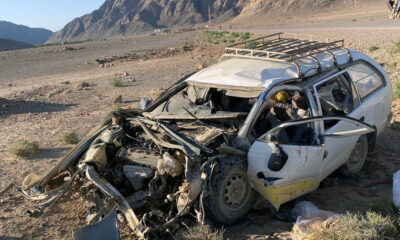
 Latest News4 days ago
Latest News4 days agoOver 50 people dead in traffic accidents over Eid
-
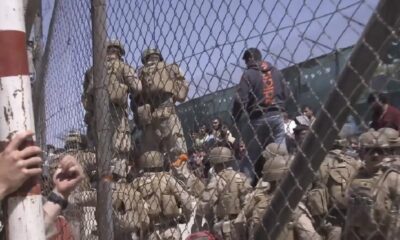
 Latest News4 days ago
Latest News4 days agoUS identifies Kabul airport suicide bomber
-
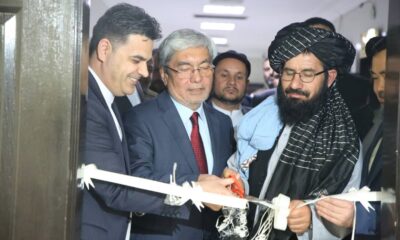
 Business4 days ago
Business4 days agoAfghanistan-Kazakhstan chamber of commerce opens in Herat
-

 Latest News5 days ago
Latest News5 days agoGood rains enable DABS to increase power production in Kabul
-

 World4 days ago
World4 days agoIsraeli military vows response to Iran attack as calls for restraint mount
-

 Sport2 days ago
Sport2 days agoATN secures exclusive rights to broadcast Paris 2024 Olympics












